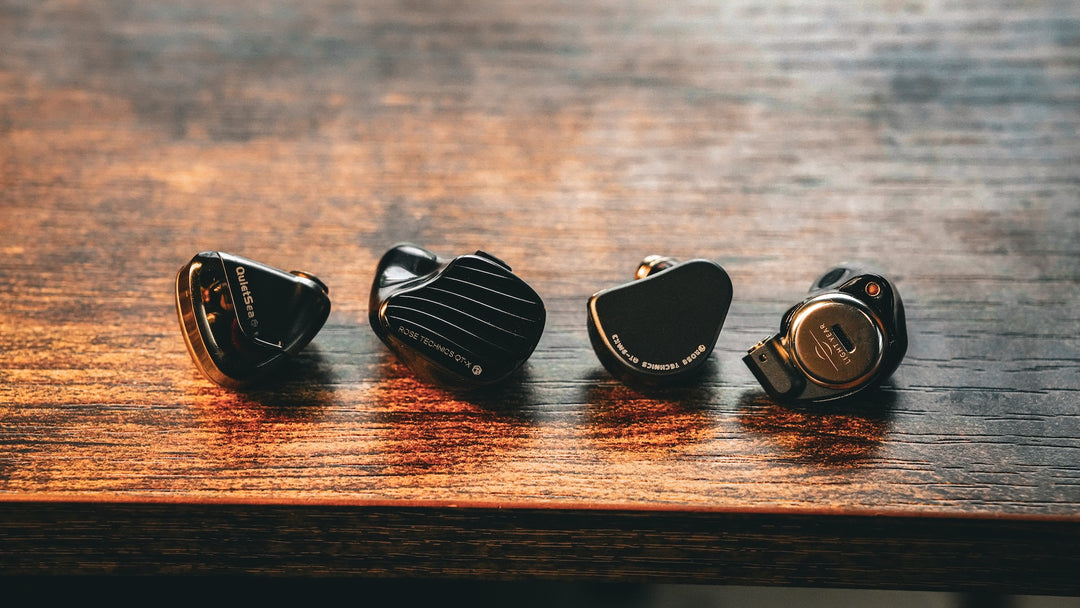With the body of a lion and the wings of an eagle, the mythical gryphon is a powerful hybrid beast possessing the strengths of both animals. The iFi xDSD Gryphon likewise combines an array of features into a singular beast of a device. It has the ability to function as a wired or wireless DAC and amp, or simply as a portable amp – with a number of other tuning and configuration features. So when you put it all together, does it end up delivering on the legendary legacy of its namesake?
Build and Design
Gryphon revives iFi’s xDSD line of portable DACs which provided a higher level of features and connectivity than the entry level hip-dac or nano iDSD products, but in a form factor that is still smaller than the larger, more powerful micro iDSD lineup. Coming in at about the size of your average DAP, Gryphon has a sturdy metal chassis, with a plastic section on the back that houses the inputs and charge port. On the front you get the volume knob, headphone outputs and buttons to control input selection, settings, and XBass/XSpace. There’s also a switch to control the built-in iEMatch on the bottom of the unit.
For physical inputs, you get a 3.5mm digital coax jack, USB, and either 3.5mm SE or 4.4mm balanced line in. You also have the option to use Bluetooth for input. For outputs, you just have the headphone jacks – again, 3.5mm SE or 4.4mm balanced. The 3.5mm uses S-Balanced and delivers the same level of signal integrity and separation between single-ended and balanced, but for maximum power you still need to use a balanced connection (3.5Vrms single ended, 6.7Vrms balanced).
Interface and Options
Rather than simply have various toggles and switches, as is common on many portable DACs in this price range, xDSD Gryphon has an OLED screen which displays a number of status indications, from the volume to and currently selected input, to the bitrate and battery life. You can also manage the device settings, which include the screen brightness, whether or not you have a voice guide for Bluetooth connection, the digital filter selection, and the charge mode.
The digital filter selection allows you to choose from Standard (STD), Gibbs Transient Optimized (GTO) which is an upsampled filter, and Bit Perfect (BP) which is essentially no filter at all. The differences here are subtle. Standard feels a little bit smoother, while Bit Perfect has a touch more definition, but also potentially a little more edge to it. GTO blends some of the smoothness with the increase in definition, but also doesn’t quite feel as natural as the other options. For charge mode, by default, the USB charging and USB input functions are separated, but you can allow charging through the USB audio input jack if you want the added convenience – potentially at the cost of more noise in your signal.
The volume control is an analog knob that’s part of a digital system, and the level is displayed on the screen. This can be a bit confusing at times, as the knob has a notch on it, which doesn’t necessarily coincide with the volume level on the screen, and a device connected via Bluetooth can also control the volume. With that in mind, I’d recommend double-checking your volume level, before putting your headphones on to avoid getting hit with more volume than you expected due to a mismatch in the volume from a Bluetooth device.
A button on the front allows you to toggle between XBass, XSpace, and both. XBass is iFi’s analog “bass correction” method which is designed – not to boost bass – but to fill in “missing” bass, particularly in planar magnetic headphones. XSpace is an analog circuit which helps expand the soundstage and provide a more speaker-like soundfield. In addition to those controls, there’s a switch on the back of Gryphon that toggles between Bass, Presence, and Bass + Presence. This switch doesn’t affect the tuning of the device as a whole, but just the operation of the XBass feature. So the XBass can be a bass only boost with the switch in Bass position, a v-boost with the switch in Bass + Presence, or (ironically) XBass can be an upper midrange boost with the switch set to Presence.
There’s, of course, one more switch on Gryphon – iEMatch. The built in iEMatch lets you select between whether you want to apply the iEMatch to the 3.5mm or 4.4mm output to provide a lower noise floor with IEMs. The Gryphon can be a bit noisy with IEMs, so this is very important, especially with more sensitive brands like Campfire Audio.
Sound
Gryphon’s sound is a little hard to pin down. The overall tonality and timbre moves away from the more warm, almost tube-y tendencies of iFi products like the micro iDSD Signature or hip-dac, towards a more neutral sound. So, while you lose some of the lush organic sound that iFi is known for, you gain a higher degree of transparency and accuracy in the output.
Gryphon presents a well rounded 3D image, with good delivery of spatial information to your headphones. I found that, particularly with XSpace enabled, the soundstage of closed-backs headphones and IEMs was significantly enhanced, adding width and depth to the soundstage. The imaging and separation of instruments is strong, and lends towards holographic imaging.
In terms of power, Gryphon’s output level is comparable with many other portable DAC/amps and digital audio players. You can easily drive more sensitive over-ear headphones, as well as any IEM. More sensitive IEMs will tend to have some low background noise, with 4.4mm balanced operation mitigating that to some degree. The built-in iEMatch eliminates the noise, but at a minor cost to the sound quality. With over-ear headphones, you’ll want balanced mode for headphones with moderately high power requirements like the HIFIMAN Arya, while more demanding headphones will be just out of reach.
The retooled XBass, which is now more of a flexible EQ setting rather than simply bass enhancement, adds a lot of tonal options to the Gryphon. This ends up being somewhat of a highlight, as between the filters and the three XBass modes, you can adjust between a bass monster, “fun” v-shape, or a more reference sound. Regardless of which way you push the XBass, the overall color remains natural, giving you a tuning with an emphasis in certain ranges, rather than a distinctively warm sound.
Comparison: iFi micro iDSD Signature $749
The micro iDSD Signature has become a standard in portable DAC/Amps under $1000. Known for its lush sound, which couples detail and musicality, the micro iDSD Signature is also quite a bit different from Gryphon in terms of it’s design philosophy and execution. While Gryphon is a sleeker device with a broader feature set, micro iDSD Signature provides a more purist design.
In terms of general performance, micro iDSD Signature outperforms xDSD Gryphon with both more power for over-ear headphones with Turbo mode, and a lower noise floor for IEMs that doesn’t require iEMatch in Eco mode (though it has built in iEMatch as well). On the flipside, Gryphon’s input flexibility with features like analog input and Bluetooth gives Gryphon the edge in that department.
The sound signature is going to be a matter of preference, with Gryphon having a more neutral overall sound, with a larger degree of flexibility in the tuning, while micro iDSD Signature has the warm, lush sound iFi is known for. If you like just a touch of color in your tone, and want the flexibility to to use the device with the widest possible range of headphones, micro iDSD Signature wins out. But if you’d rather have heightened tonal flexibility, and input options like analog input and Bluetooth, xDSD Gryphon gets the job done, just with a smaller range of headphones.
The Bottom Line
Gryphon provides an array of features and connectivity which are all easily managed through the device’s interface, and it uses all that tech to deliver music with a powerful, transparent output. If you want the best in portable connectivity options, but don’t want to sacrifice sound quality to get it, Gryphon delivers both in one marvelous beast.









